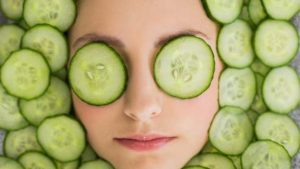The 2014 caramel apple listeriosis outbreak was traced back to cross-contamination between food contact surfaces (FCS) of equipment used for packing and fresh apples. For Washington State, the leading apple producer in the U.S with 79% of its total production directed to the fresh market, managing the risk of apple contamination with Listeria monocytogenes within the packing environment is crucial. The objectives of this study were to determine the prevalence of Listeria spp. on FCS in Washington State apple packinghouses over two packing seasons, and to identify those FCS types with the greatest likelihood to harbor Listeria spp.
 Five commercial apple packinghouses were visited quarterly over two consecutive year-long packing seasons. A range of 27 to 50 FCS were swabbed at each facility to detect Listeria spp. at two timings of sampling, (i) post-sanitation and (ii) in-process (three hours of packinghouse operation), following a modified protocol of the FDA’s Bacteriological Analytical Manual method.
Five commercial apple packinghouses were visited quarterly over two consecutive year-long packing seasons. A range of 27 to 50 FCS were swabbed at each facility to detect Listeria spp. at two timings of sampling, (i) post-sanitation and (ii) in-process (three hours of packinghouse operation), following a modified protocol of the FDA’s Bacteriological Analytical Manual method.
Among 2,988 samples tested, 4.6% (n=136) were positive for Listeria spp. Wax coating was the unit operation from which Listeria spp. were most frequently isolated. The FCS that showed the greatest prevalence of Listeria spp. were polishing brushes, stainless steel dividers and brushes under fans/blowers, and dryer rollers. The prevalence of Listeria spp. on FCS increased throughout apple storage time. The results of this study will aid apple packers in controlling for contamination and harborage of L. monocytogenes and improving cleaning and sanitation practices of the most Listeria-prevalent FCS.IMPORTANCE Since 2014, fresh apples have been linked to outbreaks and recalls associated with post-harvest cross-contamination with the foodborne pathogen L. monocytogenes These situations drive both public health burden and economic loss and underscore the need for continued scrutiny of packinghouse management to eliminate potential Listeria spp. niches. This research assesses the prevalence of Listeria spp. on FCS in apple packinghouses and identifies those FCS most likely to harbor Listeria spp. Such findings are essential for the apple packing industry striving to further understand and exhaustively mitigate the risk of contamination with L. monocytogenes to prevent future listeriosis outbreaks and recalls.
Prevalence of listeria species on food contact surfaces in Washington state apple packinghouses, 2021
Applied Environmental Microbiology
Blanca Ruiz-Llacsahuanga 1, Alexis Hamilton 1, Robyn Zaches 1, Ines Hanrahan 2, Faith Critzer 3
DOI: 10.1128/AEM.02932-20

